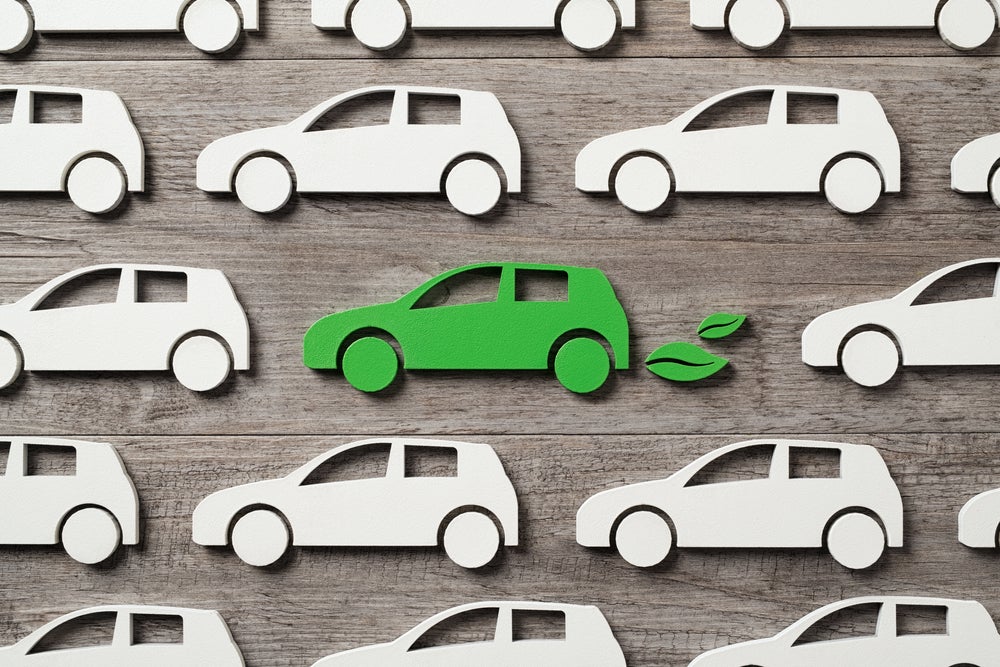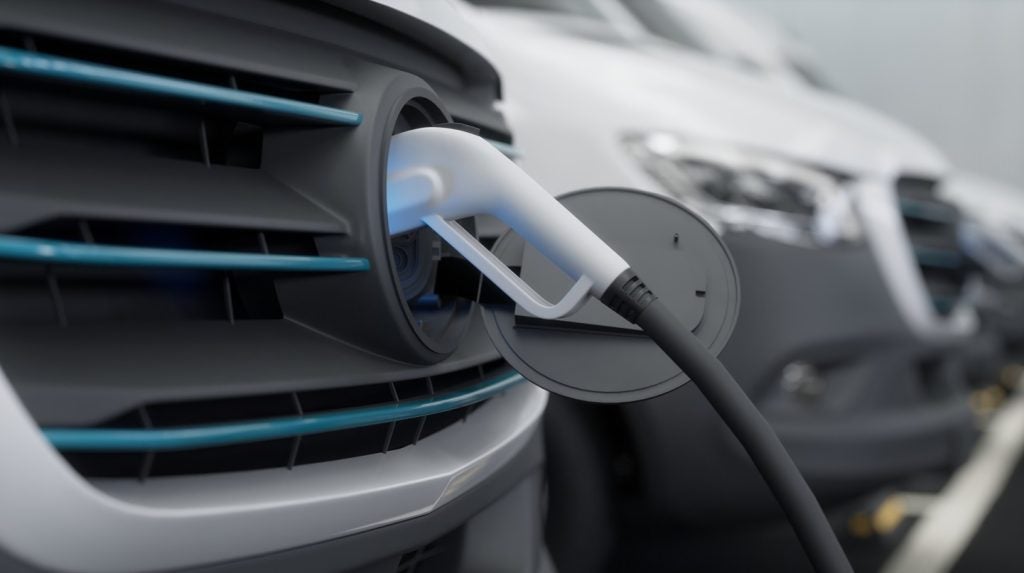Following intense lobbying from some of Germany’s premium vehicle makers and the prospect of the EU’s flagship 2035 zero CO2 vehicle policy being scuppered at the final hurdle by abstention from Germany and pushback from Italy, it seems that e-fuels will be allowed to form part of the powertrain mix for new Light Vehicles (LVs) in the EU and EU+ markets beyond 2035.
Surely this is a win-win for both regulators and the industry: new ICE cars will be net-zero CO2 in use, OEMs can have greater control over the disruptive phase-out of combustion cars and the existing ICE fleet can decarbonise at a stroke.
Then again, vehicles operating on e-fuels do have tailpipe emissions, which impact local air quality, if not net CO2 emissions. At the very least, this is at odds with the spirit of the EU zero CO2 mandate and clearly not something that regulators envisaged when the 2035 proposal was drawn up (hence the recent stand-off over e-fuels). However, pragmatism rules the day and better to get the legislation through, albeit with a few unpalatable concessions, than for it to stall and throw the industry into confusion and even paralysis.
But how likely is it that e-fuels could form a significant part of the powertrain mix in Europe in 2035? Despite their prima facie attractiveness, there remain many headwinds to their widespread deployment:
Availability
- There isn’t much e-fuel relative to gasoline or diesel now and won’t ever be. In fact, production forecasts for e-fuels suitable for vehicles indicate that only a small proportion of cars in use could be powered by them, even by 2035. Some estimates put this at no more than 2% of the total fleet.
- And even if e-fuel production were to be scaled up faster than predicted, there are other sectors where its use makes far more sense than the LV sector. Options for decarbonising air travel are far fewer than for LVs. Timely decarbonisation of medium- and long-haul aviation is notoriously difficult and not viable apart from the use of liquid fuels (but not hydrogen). It makes sense to channel large-scale production of e-fuels to aviation as e-kerosene, or perhaps to the maritime sector as e-methanol, rather than to the LV sector.
- If a business case exists, energy companies will be willing to produce increased quantities of e-fuels. But they won’t be willing to maintain today’s road fuel distribution network when demand falls away as BEVs penetrate the LV parc. And don’t forget that they have the added distraction (and cost) of pivoting to serve the e-mobility sector – they are rolling out charging networks. All of this means that e-fuel availability could be poor or non-existent in many areas. Meanwhile, public availability of BEV charge points is moving in a positive direction, although far from comprehensive currently.
Cost

US Tariffs are shifting - will you react or anticipate?
Don’t let policy changes catch you off guard. Stay proactive with real-time data and expert analysis.
By GlobalData- E-fuels are predicted to be expensive compared with fossil fuels for the foreseeable future due to the high energy costs of production and slow growth in volume.
- Even after years of scaling up production, e-methanol for LVs is likely to be circa four times more expensive than fossil fuel gasoline. That would rule out its use for the mass market and restrict it to high-end sports cars or hobby cars.
- Scale effects, new battery technologies like Li-ion optimisation, solid-state and (probably) Na-ion, will eventually result in affordable BEVs across all segments while battery packaging and energy density improvements will result in BEVs with driving characteristics better than the highest performing ICE cars (Rimac already builds such cars), eventually removing the desire for combustion engines in new cars altogether.
Efficiency, ‘greenness’
- A major attraction of BEVs is the very high onboard efficiency of the powertrain. In-use e-fuel efficiency would be similar to conventional ICE cars and hence much lower than that of BEVs.
- And e-fuels can’t compete with battery electric vehicles in well-to-wheel efficiency. There are more efficiency-sapping steps in the production and distribution of e-fuels than in the production and distribution of electricity (renewable energy for the production process is assumed in both cases).
- Experience with carbon offsetting in various sectors rarely results in net carbon emission reduction in line with claims – e-fuels may not be 100% renewable in all cases, and this is seen as an obstacle by those who really want zero tailpipe emissions with no exceptions.
- While net CO2 emissions may be zero, e-fuel combustion produces other noxious emissions (for example particulates) that would need to be treated. This adds cost and complexity.
It’s not all doom and gloom for e-fuels. The production outlook could be far rosier if the carbon capture industry blossoms. E-fuels can be made by combining hydrogen produced using renewable electricity with carbon captured from industrial emissions or, more beneficially, direct from air (DAC). This has the benefit of reducing CO2 intensity in the atmosphere while at the same time producing a net zero carbon fuel.
A more positive scenario for e-fuel supply could emerge if/when:
- Electricity generation shifts to high levels of renewable sources (currently it is less than 30% renewable globally)
- Global warming reduction is not on track to avoid irreversible impacts
- Governments respond to this by investing heavily in carbon reduction by DAC
- Green hydrogen and carbon from DAC are used as feedstocks for large-scale e-fuel production
However, such a scenario depends on a radical global agreement to tackle CO2 by means of a huge investment in its removal from the air. This would be hard to achieve and combined with the time required to achieve global renewable electricity generation means that even if this scenario played out, it would take at least a decade to accomplish and could be discounted in the 2035-time horizon.
And let’s not forget, most e-fuel will go to the aviation sector which faces a crisis if an alternative to kerosene cannot be found. Annual aviation fuel use is about seven times less than gasoline use for cars (90 bn gallons versus 600 bn). But a quick look at e-fuel plants that will be producing e-kerosene by 2026 gives an annual production figure of less than 2 bn gallons by that time – way below what the aviation sector uses each year. So, the aviation sector’s hunger for e-fuel would not be satisfied for a very long time – there won’t be lots of spare e-fuel looking for a home in the LV sector. Total e-fuel production (e-diesel + e-kerosene + e-methanol) is likely to be sub-5 bn gallons by mid-decade. Even if all 2026 e-fuel production was allocated to e-methanol for road vehicles (it won’t be), it might only be sufficient for less than 1% of the annual 600 bn gallons required.
To sum up: Yes, e-fuels might be a player in the LV sector in Europe in 2035 and beyond. But they won’t be a big one. ICE fleet decarbonisation via e-fuel sounds enticing but it will occur naturally as BEVs replace ICE vehicles – the 2035 ZEV target was chosen so that by 2050 this process will have been completed. Right now, e-fuels are a hot topic, offering a way for an industry undergoing enormous change to get some politically useful concessions from regulators. But the evidence today points to e-fuels in Europe’s Light Vehicle sector being backed into a very small corner, or not getting off the ground at all.
Al Bedwell, Director, Global Powertrain, GlobalData
This article was first published on GlobalData’s dedicated research platform, the Automotive Intelligence Center








